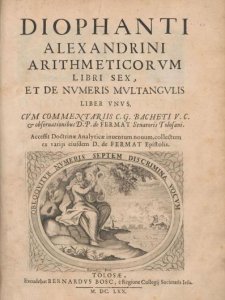Andrew Wiles presented with the Abel Prize in Oslo
The work of Oxford University Professor Sir Andrew Wiles was celebrated as having 'heralded a new era in number theory' as he received the top international prize for mathematics.
Sir Andrew received the 2016 Abel Prize from Crown Prince Hakon of Norway at the prize ceremony in Oslo on 24 May. He was awarded the prize 'for his stunning proof of Fermat's Last Theorem by way of the modularity conjecture for semistable elliptic curves, opening a new era in number theory'.
The ceremony at the University Aula was attended by more than 400 guests, from members of the international mathematics community to local residents.
Professor Ole Sejersted, President of the Norwegian Academy of Science and Letters, which presents the Abel Prize, said: 'Mathematicians have tried to prove Fermat's Last Theorem for 350 years, without success, indicating that mathematicians regard this as one of the great mathematical puzzles.
'The Abel Committee says that Sir Andrew's work has heralded a new era in number theory. To me, this indicates that the work on the theorem required the development of an entirely new mathematical foundation, the significance of which goes far beyond the actual proving of the theorem.'
Accepting the prize, Sir Andrew Wiles said: 'As a ten-year-old eager to explore mathematics I rummaged in the popular mathematics section of my local public library and found a copy of a book called The Last Problem by E.T. Bell. I did not even have to open the book. On the bright yellow front cover it told the story of the 1907 Wolfskehl prize offered for the solution of a famous mathematical problem. The problem itself was on the back cover. I was hooked.
'It was a wonderful find for me. Apparently inside mathematics there was hidden treasure! A little over 300 years previously a Frenchman by the name of Pierre de Fermat had solved a beautiful sounding problem, but he had buried the proof and now there was a prize for finding it!
'Fermat did not leave any clues because he did not have a solution, but nature itself leaves clues. I just had to find them. There was never going to be a one-line proof. Nor do proofs come just because one has been born with mathematical perfect pitch. There is no such thing. One has to spend years mastering the problem so that it becomes second nature. Then, and only then, after years of preparation is one's intuition so strong that the answer can come in a flash.
'These eureka moments are what a mathematician lives for; the bursts of creativity that are all the more precious for the years of hard work that go into them. The moment in the morning of September 1994 when I resolved my last problem is a moment I will never forget.'
Fermat's Last Theorem had been widely regarded by many mathematicians as seemingly intractable. First formulated by the French mathematician Pierre de Fermat in 1637, it states:
There are no whole number solutions to the equation xn + yn = zn when n is greater than 2, unless xyz=0.
Fermat himself claimed to have found a proof for the theorem but said that the margin of the text he was making notes on was not wide enough to contain it. After seven years of intense study in private at Princeton University, Sir Andrew announced he had found a proof in 1993, combining three complex mathematical fields – modular forms, elliptic curves and Galois representations.
Sir Andrew not only solved the long-standing puzzle of the theorem, but in doing so he created entirely new directions in mathematics, which have proved invaluable to other scientists in the years since his discovery. The Norwegian Academy of Science and Letters said in its citation: 'Few results have as rich a mathematical history and as dramatic a proof as Fermat's Last Theorem.'
The Abel Prize is named after the Norwegian mathematician Niels Henrik Abel (1802-29) and was established in 2001 to recognize pioneering scientific achievements in mathematics. Abel himself did some of the early work on the properties of elliptical functions. Previous winners of the Prize include Britain's Sir Michael Atiyah and the late US mathematician John Nash.
Accompanying the prize-giving ceremony is a series of 'Abel week' activities aimed particularly at young people, including the awarding of the Holcombe Memorial Prize for an outstanding teacher of mathematics and the UngeAbel contest for teams of secondary pupils. This year's winning teacher and young winners were in the audience for the Abel Prize ceremony.














